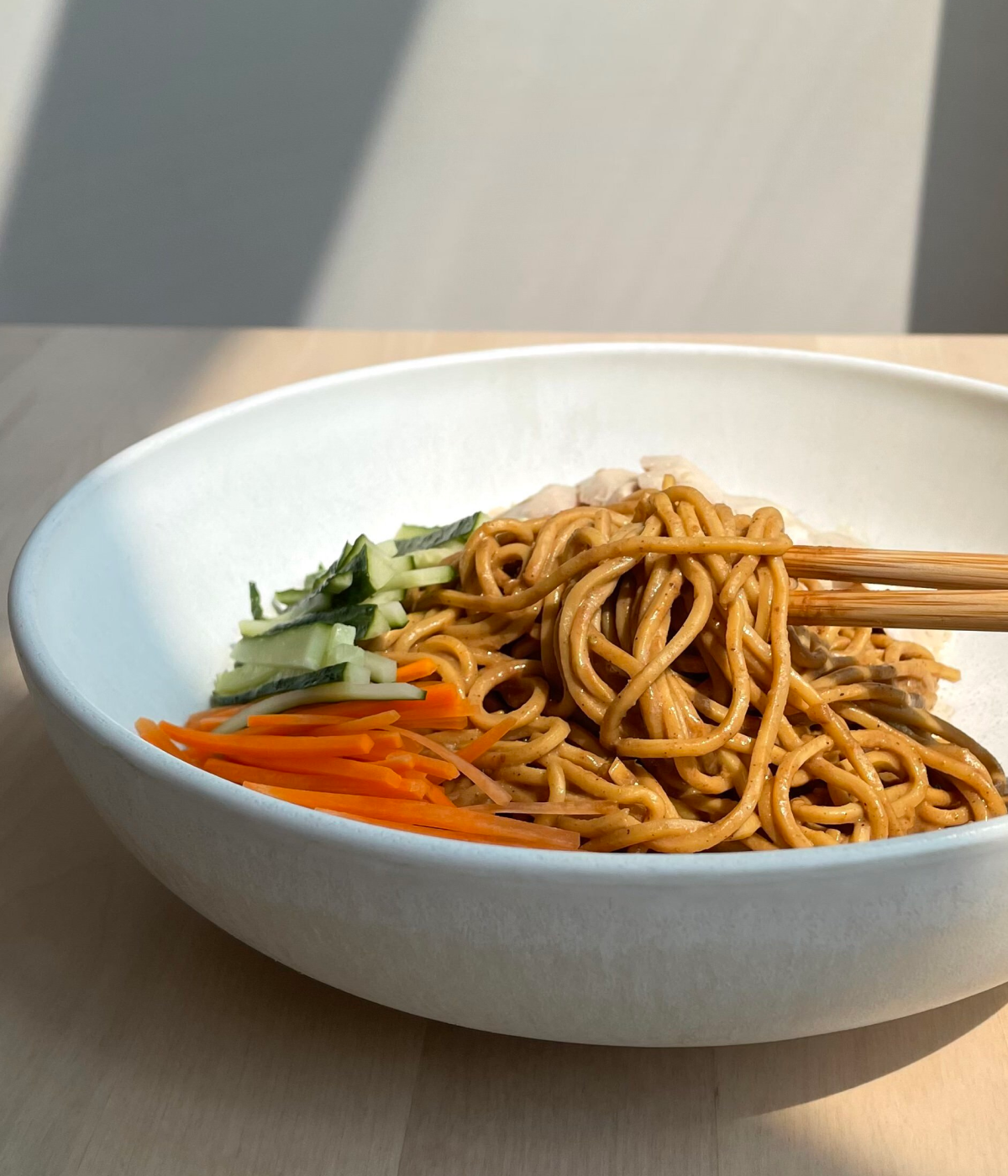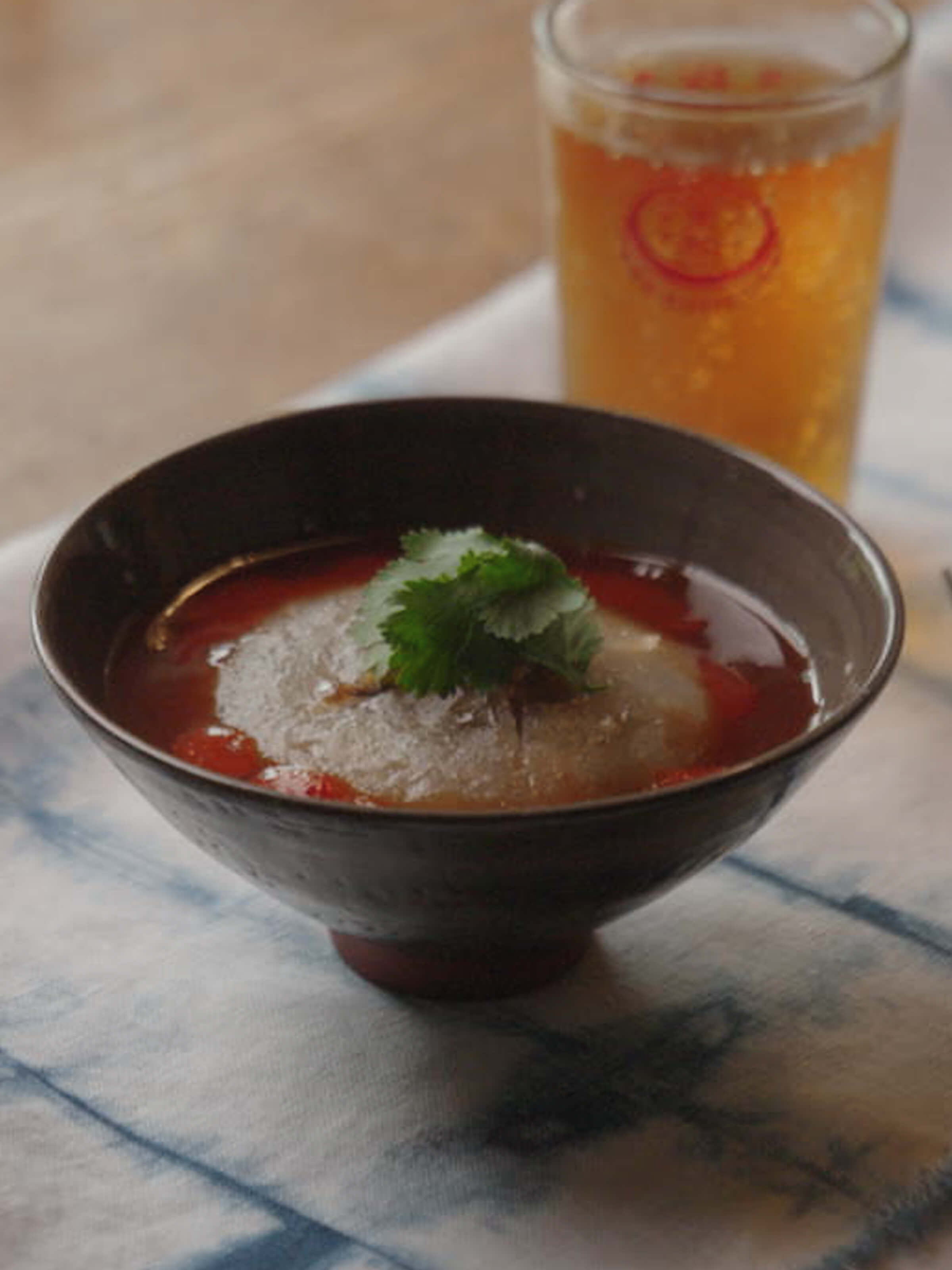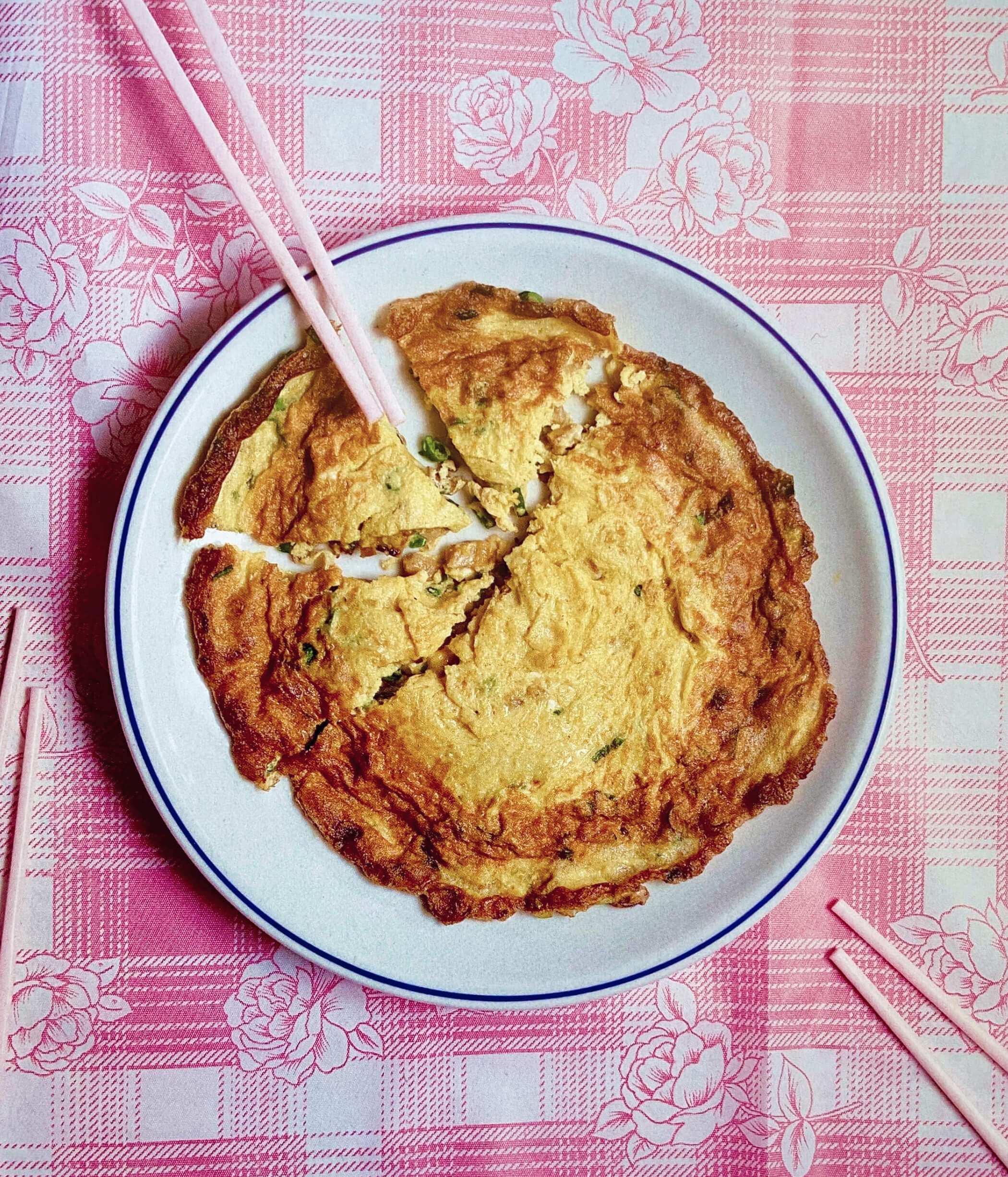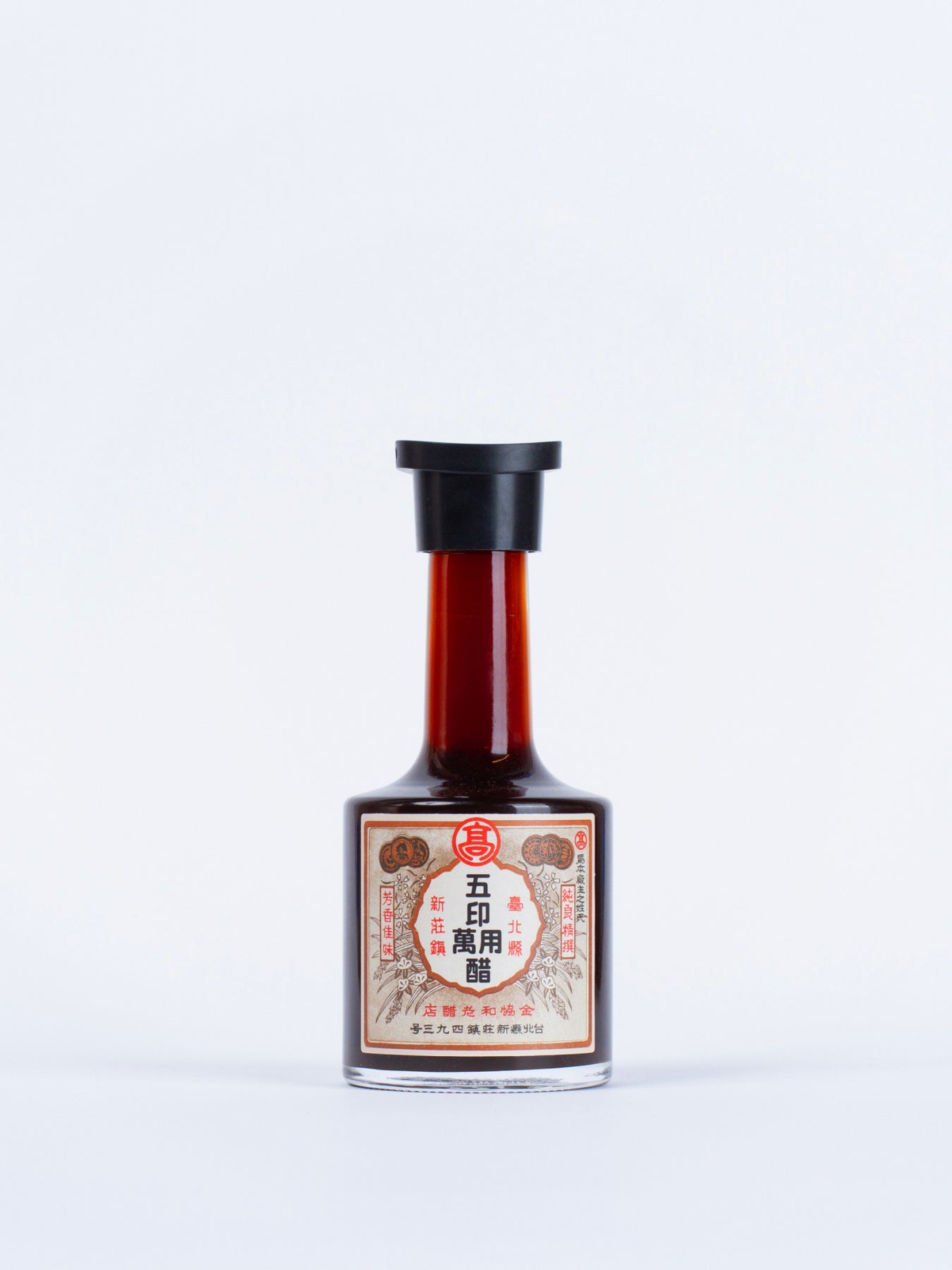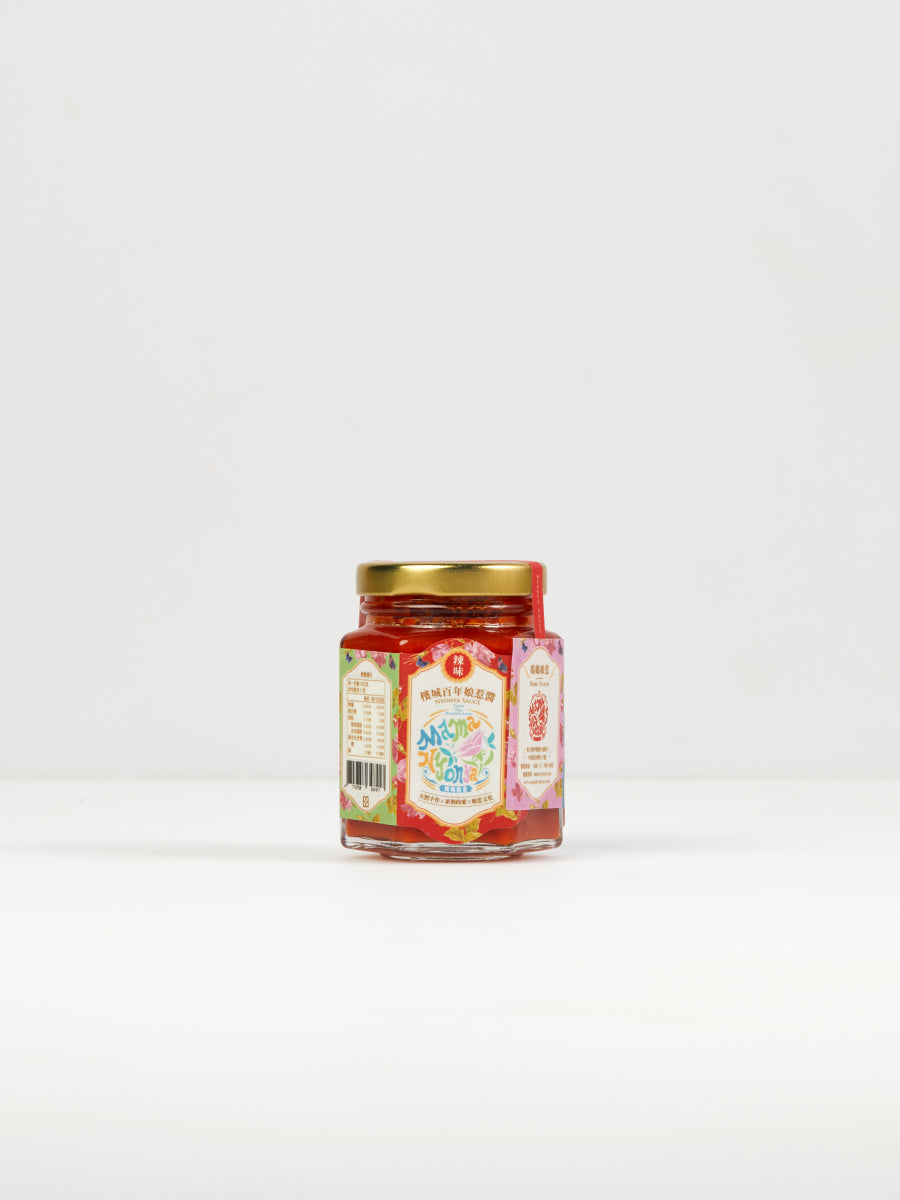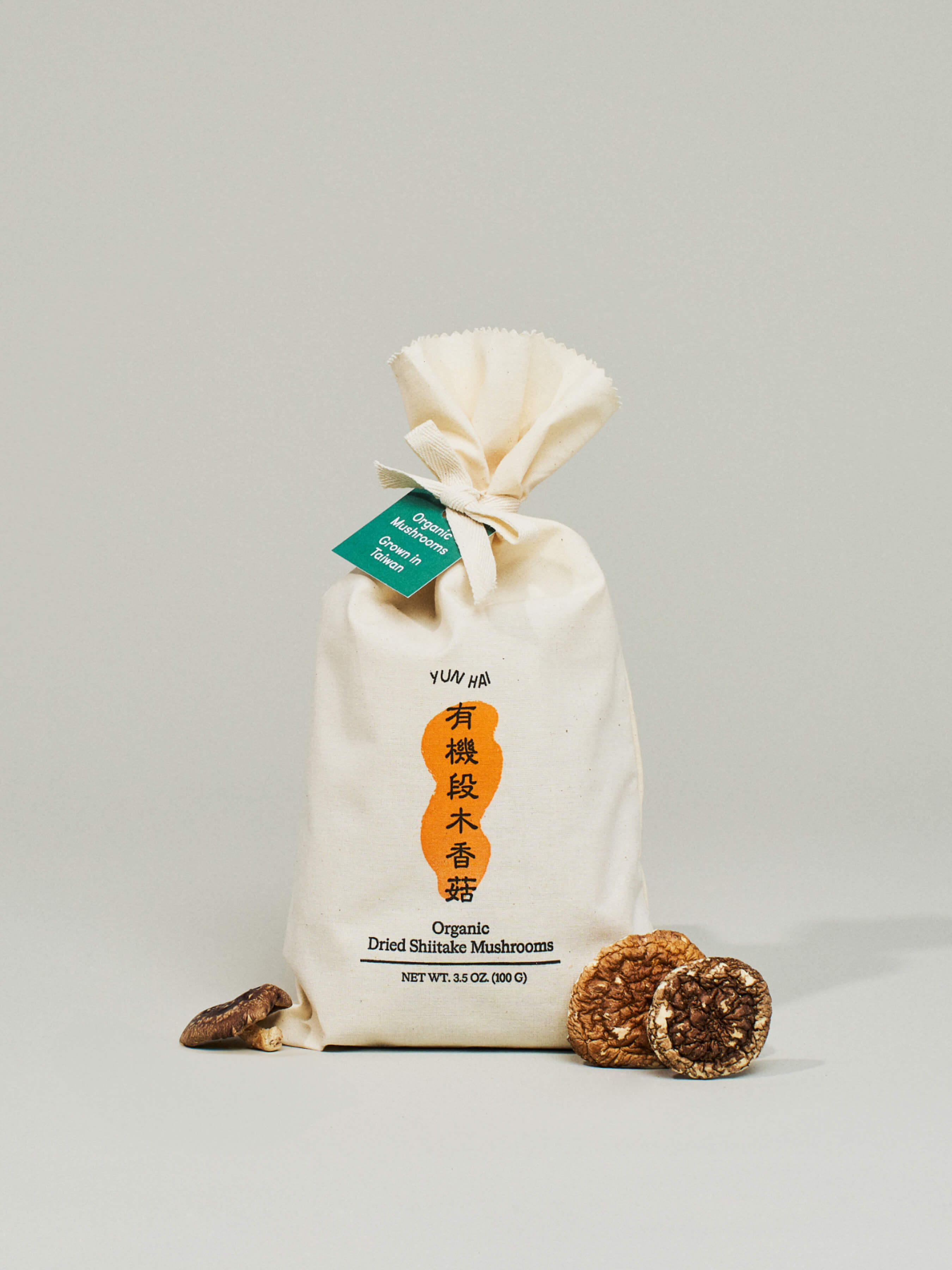Crystal Meatball (Bawan) 肉圓
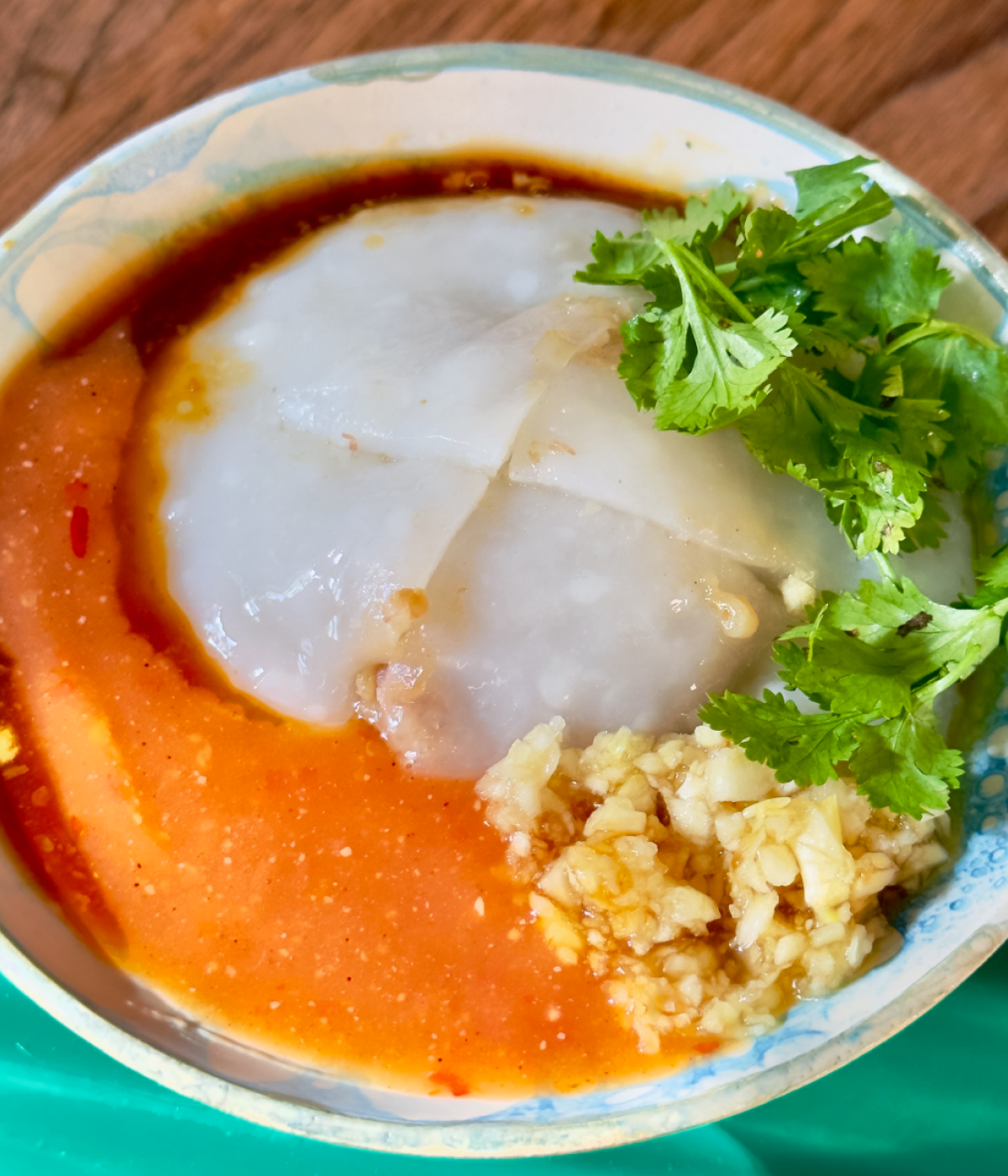
A crystal meatball is essentially a type of dumpling, but instead of wheat, the wrapper is made with a collection of starches that give it a uniquely soft and gelatinous quality. Texture -wise, the exterior is actually surprisingly similar to a boba, just oversize and stuffed with meat. It’s said to have been invented in 1898 in the city of Changhua in central Taiwan, when a flood hit and caused a shortage of food supplies. A man by the name of Fan Wan-Chu 范萬居 decided to make ends meet by grinding sweet potato into powder, molding it into a wrapper, and stuffing bamboo shoots inside. Today, there are regional variants all over the island, and this particular recipe is from Tainan, where the stuffing is exclusively just pork. Unlike the meatballs from Changhua, which are glossy and translucent, Tainan’s version leans more on the opaque side and is heavier on the rice flour.
Because there’s no gluten in the dough, the raw batter is gooey, sticky, and has no structure whatsoever. The vendors’ answer to this is speed. They basically take a quick scoop of batter, plop it in the fillings, and put the whole thing in a steamer in one sleek movement. If you look closely at some of the crystal meatballs sold in Tainan, you can actually see ridges on the exterior from the indents of the chefs’ fingers. This recipe is designed so that the individual dumplings are shaped in small sauce trays, so you can take your time without worrying about them disintegrating in your hands.
Excerpted from Made in Taiwan: Recipes and Stories from the Island Nation by Clarissa Wei, pages 108-110, by permission of S&S/Simon Element. Available from us or wherever books are sold.
Crystal Meatball (Bawan)
肉圓
Makes 8
Special Equipment: 8 small, round sauce bowls, about 2½ ounces each—the same type of trays they serve soy sauce in at sushi restaurants; stand mixer (optional).
Note: These can keep in the refrigerator for 1 to 2 days, though it’s best to eat them on the same day. To reheat, just steam them again over medium-high heat for 10 minutes.
For the Filling
- 5 ounces (140 g) pork tenderloin
- 5 ounces (140 g) ground pork
- 2 tablespoons fried shallots (store-bought or homemade)
- 1 tablespoon soy sauce
- 1 tablespoon sweet potato starch
- 1 tablespoon Taiwanese rice wine (michiu) or cooking sake
- 1½ teaspoons white sugar
- ½ teaspoon fine sea salt
- ½ teaspoon ground white pepper
- 1 garlic clove, minced
For the Sauce
- Everyday Garlic Soy Dressing and/or Haishan Sauce (pick up the book for the sauce recipes!)
Instructions
Make the Filling:
- Cut the pork tenderloin into ½-inch- (1-cm-) thick chunks, about 1 inch (2.5 cm) long.
- In a large bowl or the bowl of a stand mixer, combine the sliced pork tenderloin, ground pork, fried shallots, soy sauce, sweet potato starch, rice wine, sugar, salt, white pepper, and garlic.
- Mix thoroughly with chopsticks in one direction until the meat is very sticky, about 5 minutes. (Alternatively, churn in a stand mixer on low speed with the dough hook attachment for 2 minutes.)
- Cover and put in the refrigerator for at least 30 minutes or up to overnight.
- In a medium bowl, combine the rice flour, salt, and ⅔ cup (155 ml) water. Whisk until the flour dissolves and the liquid looks like milk.
- In a medium saucepan set over high heat, heat 2 cups (470 ml) water until it starts boiling. Reduce the heat to low and pour in the rice batter.
- Mix continuously with a balloon whisk until it begins to solidify and turn into a thick batter, 30 seconds to 1 minute. The texture will be reminiscent of a cake batter or a really dense frosting.
- When the batter begins to form stiff peaks on the whisk, turn off the heat, and immediately remove the pot from the stove. Let it cool until the batter is just slightly warmer than room temperature, about 30 minutes.
- In a medium bowl, mix together the sweet potato starch and the tapioca starch.
- Fold the starches into the warm batter with a silicone spatula and mix until they are completely dissolved. (Alternatively, transfer to a stand mixer and knead with the paddle attachment for 2 minutes on high speed.)
- With a pastry brush, coat the inside of 8 small, round sauce bowls with the oil. Take the filing out of the refrigerator.
- Dip a small silicone spatula in water, scoop out a portion of the batter with it, and plaster on a thin but even layer in a sauce bowl.
- Take a handful of the meat filling, about 43 g, and put it in the center of the bowl.
- Scoop another portion of the rice batter out and plaster it over the meat, covering it completely.
- Dip your fingers in water and shape the rice batter so that it forms a smooth, round dome. Use a finger to peel any excess batter off the edge of the bowl. The dome should only be about 2 inches (5 cm) in diameter and about 1 inch (2.5 cm) tall. If the dough is getting too sticky, wet your hands again.
- Smooth off the top with your fingers so that it shines. We don’t want an extremely thick layer of dough, so shape it so that the skin is relatively thin. The rice batter is actually quite forgiving, so you can manipulate it as much as you want. If you still think it’s too thick, just pinch off some of the batter and smooth it out again with your hands.
- Arrange the bowls in a tiered bamboo steamer and cover. Partially fill a large wok with water and bring to a rapid boil over medium-high heat. Carefully perch the bamboo steamer on top.
- Steam for 30 minutes, replenishing with boiling water in the bottom of the wok if needed.
- When the time is up on the steamer, turn off the heat, and gently take the bowls out.
To serve
Brush a thin layer of oil on top of each meatball to keep it glistening. Dress with a dollop of Garlic Soy Dressing or Haishan sauce (or both—many restaurants do a blend) and enjoy immediately.
—
How to Make the Wrapper with Raw Rice Kernels:
Makes 8
Ingredients:
- ½ cup plus 2 tablespoons (125 g) basmati rice
- ¼ teaspoon fine sea salt
- ½ cup plus 2 tablespoons (100 g) sweet potato starch
- ¼ cup plus 3 tablespoons (55 g) tapioca starch
Instructions
- Rinse the basmati rice in a fine-mesh sieve under running water.
- Transfer the rice to a medium bowl and add enough water to cover.
- Let sit at room temperature for at least 4 hours or overnight in the refrigerator.
- Drain the rice in a sieve.
- Transfer the rice to a blender and add the salt and ½ cup (120 ml) water. Blend on high speed until milky, about 1 minute. It will be a rather thick but smooth paste.
- In a medium saucepan set over high heat, bring 2 cups (470 ml) water to a rolling boil. Reduce the heat to low and pour in the rice batter.
- Mix continuously with a balloon whisk until it begins to solidify and turn into a thick batter, 30 seconds to 1 minute. The texture will be reminiscent of a cake batter or a really dense frosting. When the batter begins to form stiff peaks on the whisk, turn off the heat, and remove the pot from the stove immediately.
- Let it cool until the batter is just slightly warmer than room temperature, about 30 minutes.
- In a medium bowl, mix together the sweet potato starch and the tapioca starch. Fold the starches into the warm batter with a silicone spatula until they are completely dissolved. (Alternatively, transfer the batter and the starches to a stand mixer, and knead with the paddle attachment for 2 minutes on high speed.)
- Continue as directed on the previous page.
Recipe by: Clarissa Wei & Ivy Chen

